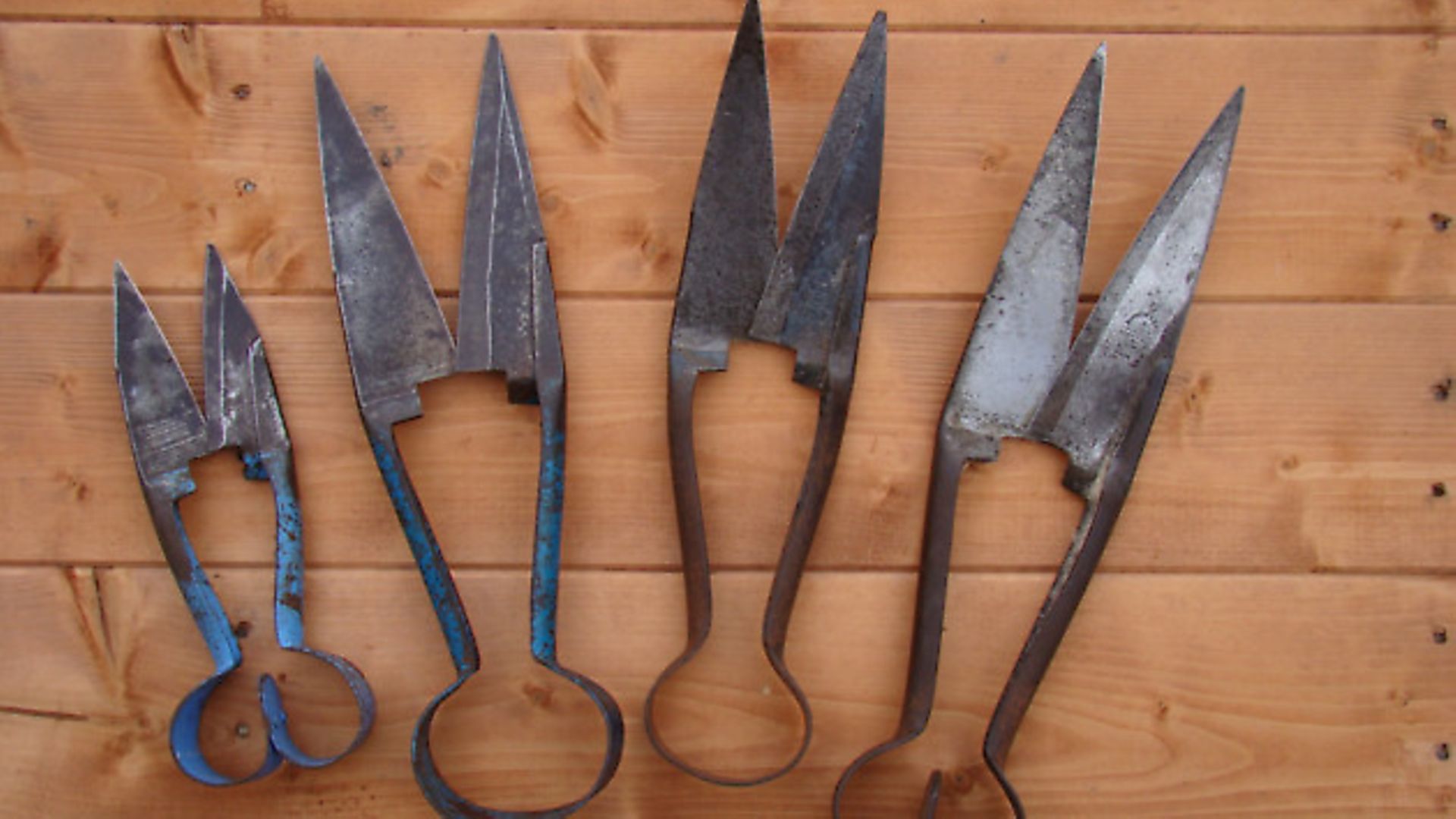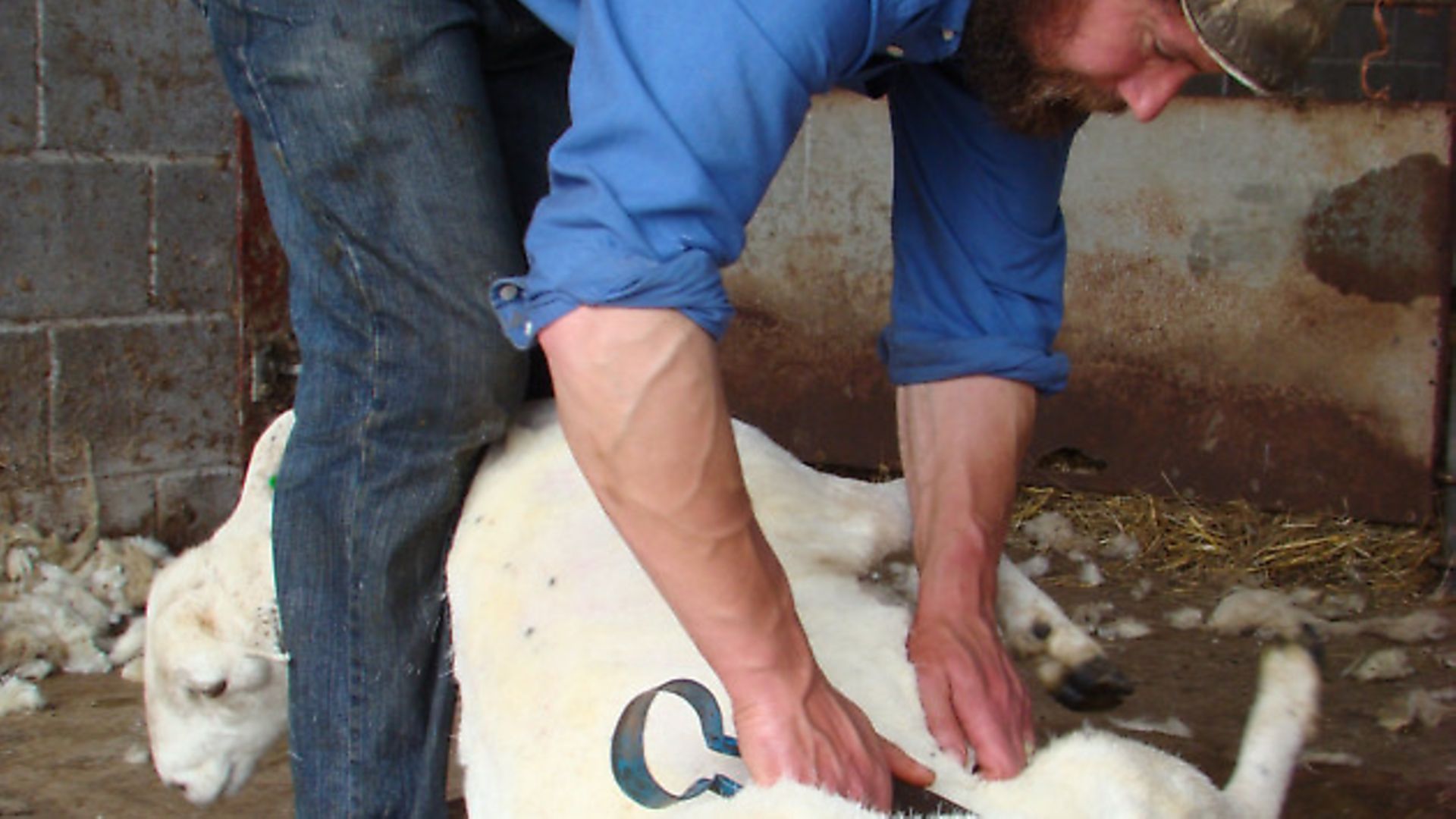By the time we get around to early June, sheep really are much better off without their fleeces!

In fact, many people will already have shorn their flocks by now, particularly smallholders who show their sheep – the little bit of extra growth of wool that’s gained by early shearing might just give them the edge in the ring.

Generally, shearing is carried out by a contactor, using an electric shearing machine, but there’s no earthly reason why the owners of very small flocks shouldn’t do the job themselves in the traditional way – by hand.
You’ll need a nice clean board to shear on – a sheet of plywood is ideal – and if you’re shearing outdoors spread out a piece of tarpaulin to catch all the snippets. If you’ve only got a few sheep to shear then some empty paper feed sacks will do to pack the fleeces in, otherwise you’ll need a wool sheet from the BWMB.
Having turned a sheep over properly, and manoeuvred it onto your board, begin by shearing the brisket, followed by the belly and crutch. Next shear the left hind leg, and the tail. The left side of the neck is done next, then the left shoulder. After this, the sheep is laid down on her side, and you shear the ‘long blows’. Starting from the forward edge of the area cleared when shearing the hind leg, each long blow runs the whole length of the sheep, parallel with her backbone. Once the whole of the sheep’s left side is shorn, work your way down the right side of the neck, and clear the right shoulder, lifting the sheep up as you go. Continue until the whole of the right side is shorn, and finally complete the job by shearing the right hind leg. It takes me about five minutes, but don’t be surprised if it takes you a lot longer than that. The main thing is not to try to shear fast. The speed will come naturally as your technique improves.
TIP
Sheep are much easier to shear on a hot day, and this can be further helped by penning them up tight for a while, so that they sweat a bit. This really softens the grease in the fleece, and helps to lift the wool off the body of the animal, making your task much less backbreaking.
Wet sheep.
Never shear wet sheep. This is particularly pertinent if you’re using electric clippers, as holding onto a metal handpiece, connected via a metal shaft to an electric motor, could have fatal consequences if the sheep between your legs is a soggy one!
(Even if the sheep are dry, you should always have a circuit breaker in the system).
Also, quite apart from the risk of electrocution, damp wool won’t store well.
Image(s) provided by:
Archant







